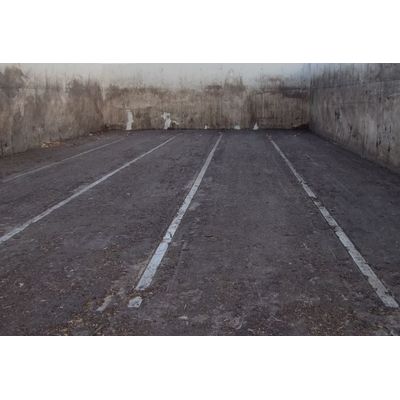

- Home
- Companies
- Engineered Compost Systems (ECS)
- Products
- ECS - Aerated Static Pile Composting ...

ECS - Aerated Static Pile Composting Aeration Floors
Aeration floors provide a critical role in aerated composting systems. They also are one of the most costly and challenging elements to design and build, and should be selected to meet the unique conditions of each facility. ECS has developed several aeration floor technologies, each with it’s own set of pros and cons.
In general, well-designed aeration floors should support favorable process conditions as uniformly throughout the pile as possible, including sustaining Best Management Practice levels of oxygen and temperature. When evaluating aeration floors technologies, ECS recommends considering:
- Uniformity of air distribution
- Minimizing surface plugging
- Capital cost
- Durability
- Operational Cost
- Ability to capture surface water
Types of compost aeration floors
Most sites composting with aerated static piles use one of the following aeration floor types:
- Above grade sparger pipe
- Below grade sparger pipe
- Below grade trench
Aeration Floor Design
The fluid mechanics governing friction and airflow through these aeration floors are fundamentally similar across all three cases. At its simplest, air loses pressure due to friction as it travels down a pipe. When that pipe has orifices, the pressure driving air through the orifices will vary along its length as this pressure changes. The variations of flow through each orifice is called mal-distribution. In compost aeration floors, some degree of mal-distribution is inevitable. To keep the compost pile oxygen and temperature levels within a desired range, an aeration floor should be designed to minimize this mal-distribution.
We use the term ‘sparger’ to describe the pipe used to distribute air in both above and below grade floor types. To design a high-performing sparger the spacing and size of the orifices is critical since the pressure losses through the orifices must dominate the pressure loss down the pipe, but without requiring excessive fan power. ECS has developed a computational fluid model so we can optimize the sparger design for any size pile and for any range of aeration rates (cfm/yd3). Our sparger pipe floors effectively minimize mal-distribution and economize on fan power.
ECS trench floors are also designed to minimize mal-distribution while requiring less fan power than a sparger floor. The stainless-steel trench covers have many more small holes and operated at lower pressures than a comparable sparger floor. They achieve adequate airflow uniformity by using a below-grade pipe network to balance flows and minimize pressure losses along the trench. The same computation fluid model is used to select the sizing and geometry of the pipe network/trench/cover components that comprise this aeration floor. In both approaches, the design engineer must ensure that the pressure loss through the small orifices in the trench cover is sufficient to achieve a semi-uniform air distribution across the trench. Trench floors are generally more expensive to construct than below-grade pipe floors.
